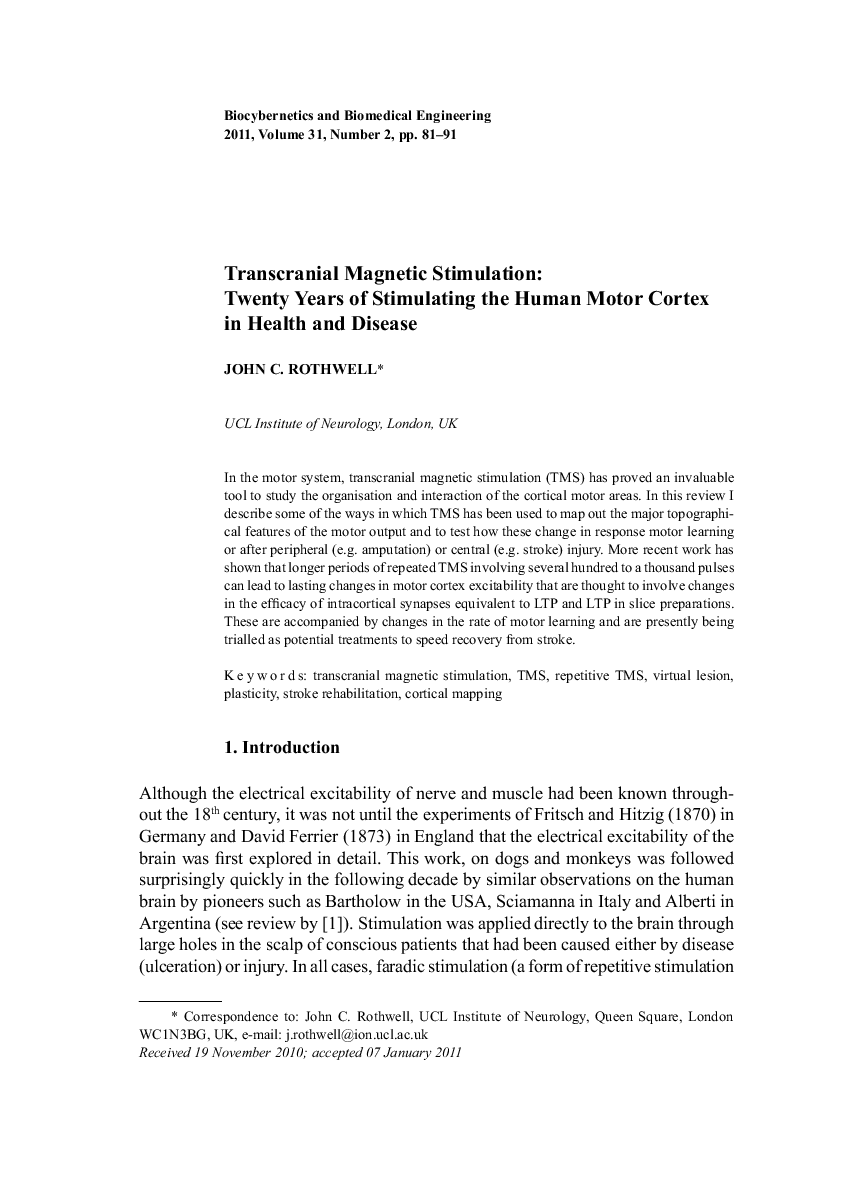| Article ID | Journal | Published Year | Pages | File Type |
|---|---|---|---|---|
| 5290 | Biocybernetics and Biomedical Engineering | 2011 | 11 Pages |
In the motor system, transcranial magnetic stimulation (TMS) has proved an invaluable tool to study the organisation and interaction of the cortical motor areas. In this review I describe some of the ways in which TMS has been used to map out the major topographical features of the motor output and to test how these change in response motor learning or after peripheral (e.g. amputation) or central (e.g. stroke) injury. More recent work has shown that longer periods of repeated TMS involving several hundred to a thousand pulses can lead to lasting changes in motor cortex excitability that are thought to involve changes in the efficacy of intracortical synapses equivalent to LTP and LTP in slice preparations. These are accompanied by changes in the rate of motor learning and are presently being trialled as potential treatments to speed recovery from stroke.
